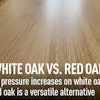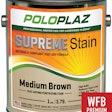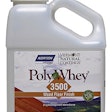Last week we looked at water salvage, now it's time to look at material given a second functional life-salvage from buildings and other sources. This is what John Williams told me I should call a "third generation legacy: first, a tree in the forest, then, a turn of the century building, and finally, a floor in a new home." (Of course, a particular beauty of wood is that it can keep going-perhaps some of these wood products will enter a fourth generation in decades to come.)
I would like to thank Carol Goodwin of Goodwin Heart Pine and John Williams of Mountain Lumber for offering so many insights into the industry. And it's certainly an industry we should all know more about. Carol emphasized that this is a booming industry, noting that "reclaimed wood manufacturers have seen a ten-fold increase in orders and there is an increase of many times more than that in the number of manufacturers who now advertise reclaimed woods."
I asked them first about their selection process. Carol told me that "selection of salvage is key" and that they reject a large percentage of the wood offered to them. The reasons for rejection of material can be a factor of both economics and health. So this week, I want to look at the economics, and next week we'll consider the health factors.
The economics are the same for any timber producer-making sure there is sufficient recovery from the raw material to justify the cost. Recovery can be a factor of size or quality and options for marketable grades.
That said, reclaimed timbers have unique production issues that fresh timber producers don't face. Old wood with too much rot or too many nails or too much chemical penetration isn't economical to work with. Carol noted that "there can be 100 nails or more in an old stud, all of which have to be carefully located and removed."
Other concerns include insect infestation and larvae. These can add character to the wood, (consider "wormy chestnut"), but you want to make sure that it's not an ongoing process! Termites and powderpost beetles are two of the most common concerns. John notes that "the larva needs to be dealt with by the manufacturer. While chemical treatment and fumigation will deal with these little buggers, chemicals are not the most environmentally friendly products. So we kiln-dry to where the core temperature reaches 140 degree Fahrenheit so that both bugs and larvae will be killed without any chemical residue or impact."
By the way, most people assume that if the wood is 100 years old, it as dry as it's going to get. John says that statement is a common misguided belief. "The age of wood has nothing to do with how dry it is. Wood is hygroscopic (sponge-like) and both absorbs and expels water based on the environmental conditions you place it in. More often than not, the raw wood coming from reclamation efforts has been exposed to excessive moisture conditions. Storage outside in the rain and in contact with the ground are two of many reasons that can cause wood to reach fiber saturation point and beyond-30% and higher. So just like fresh sawn, all reclaimed timber should be properly kiln-dried for both insect treatment and stabilization."
Carol talked about "harvesting" issues. She said "building demolition contractors have to take extra care to get out the old beams in good condition. There is varying quality and sizes of heart pine beams in the old industrial-era warehouses. To get the larger, dense-growth beams, mostly heartwood and without a lot of holes and defects, requires further sorting and separating." And if you're trying to preserve a specific building as it was-if you're not going to remill the floor for example, but try to transfer it as it was to a new home, you need to number the boards as you carefully pull them up.
Carol likes working with old warehouses (mostly from 1880-1900) where machinery wasn't as often present. She explained that "wood from an old barn doesn't generally compare in quality to the large posts and joists from a large, heavy-duty warehouse. The barns and houses were often made from smaller trees that were on the property, while the warehouses needed to have large timbers."
Mountain Lumber goes far afield for their salvage. Their products include oak from the original Guinness beer vats in Dublin, Ireland; railroad cars in Russia; and elm from ancient Chinese structures built during the Ming Dynasty. In some cases, like others in the industry, they will offer a product series unique to one old structure or source, and the customer can get a write-up on the building's history and pictures of structure before it started its new life in their home.
































